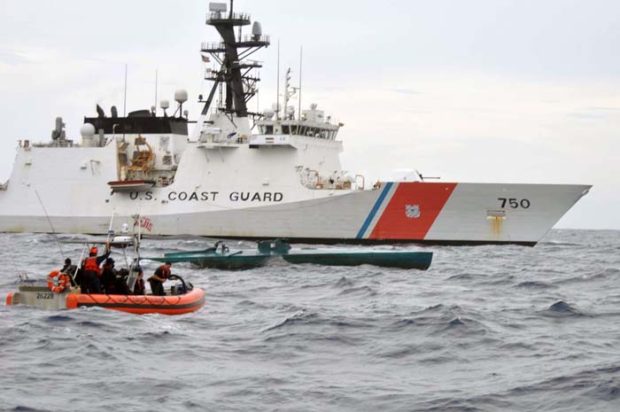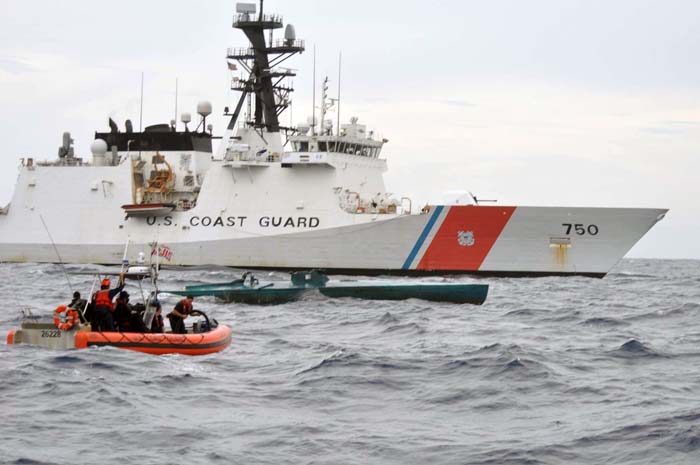
Everyone loves the Coast Guard – even Libertarians.
I loved the water on boats big and small, from poling an 18-foot [18’ 2”] Hewes Bonefisher skiff on saltwater flats of the Florida Keys to the Gulfstream off the coast of New Jersey on a 34-foot Rybovich.
So, it’s August 1975, Stone Harbor, NJ, and the weather report still calling for perfect weather. We cleared the inlet at sunup. We headed for the Gulfstream eddies that spinoff the Gulfstream – a four-hour run [+/-].
The fishing was great; we caught yellowtail tunas, then debris attracted dolphinfish. It was game on
At around 2 PM when we saw blackness in the east. We hauled arse, but the blackness outran us two hours later. Then waves in long swells, then higher waves in short swells, then 40 mph winds, then torrential rain, then almost blindness – the Atlantic went rogue on us, and we lost communication.
We were lucky; a severely damaged but still running Rybovich saved us. We made the Stone harbor inlet just past midnight
Today, weather weirdness is always a factor that can take lives, but the weather devices that are available today make what happened in 1975 unlikely, but a boater has to have the ability to communicate on-board. It’s a matter of life and death.
By Skip Clement, publisher emeritus
Coast Guard’s top 5 recommended communication devices to take with you underway
 Going out on the water can be dangerous, especially if you don’t have the right equipment. If you do find yourself in trouble, being able to communicate that you need help can be a lifesaver—literally!
Going out on the water can be dangerous, especially if you don’t have the right equipment. If you do find yourself in trouble, being able to communicate that you need help can be a lifesaver—literally!
Here are the top five items the Coast Guard recommends you take with you on your boat so you can call for help if you need it:

Seaman Christian Green, of Station Manasquan Inlet, made a radio call during training operations aboard a 47′ Motor Lifeboat, while Petty Officer 3rd Class Vaugh Yarnall looks on, February 24, 2017. U.S. Coast Guard photo by Auxiliarist David Lau.
1. VHF-FM marine radio: It’s the most versatile piece of comms equipment you can have! If you find yourself in distress, calling for help on the radio not only alerts the Coast Guard, but it also alerts all other vessels in your surrounding area who may be able to assist you. If you find yourself in distress, calling for help on the radio not only alerts the Coast Guard, but it also alerts all other vessels in your surrounding area who may be able to assist you. In addition to being able to call for help, it also allows you to receive important weather information, safety updates, and call bridges to request openings.
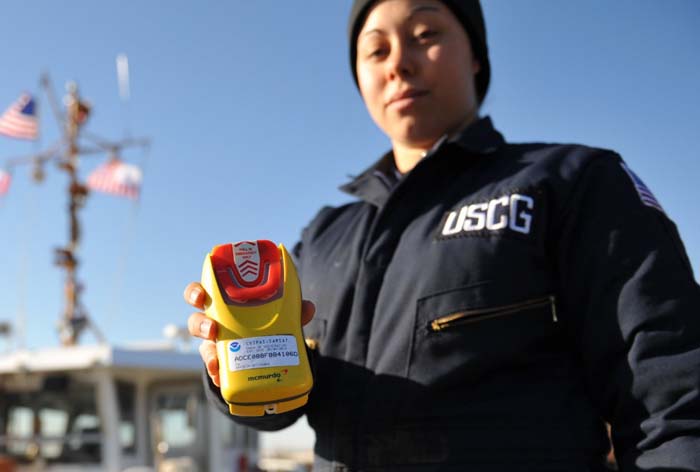
BALTIMORE – Seaman Ashleigh Wilson, a boatcrew member at Aids to Navigation Team Baltimore, holds a personal emergency position indicating radio beacon on a pier located in Curtis Bay, Md., Dec. 9, 2010. Crewmembers at ANT Baltimore carry PEPIRBs while servicing aids throughout the upper Chesapeake Bay. U.S. Coast Guard photo by Petty Officer 3rd Class Robert Brazzell.
2. Emergency Position Indicating Radio Beacon: They let us know where you are via satellite! Emergency Position Indicating Radio Beacons can also tell the Coast Guard who the beacon is registered to and how to contact you! Register your beacon and verify your information here.
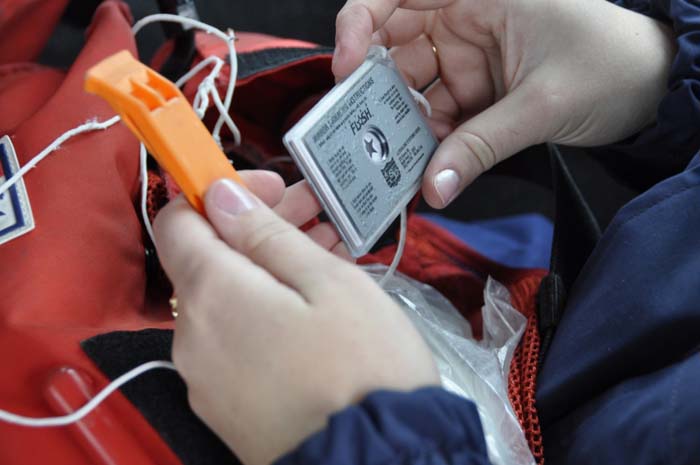
Coast Guard Seaman Samantha Randall, 20, of Coast Guard Station King’s Point in King’s Point, N.Y., displays a signal whistle and mirror required to be carried by U.S. Coast Guardsmen who are underway April 15, 2009. The Coast Guard strongly urges mariners to be prepared in case of emergencies and to bring survival equipment such as signalling and sound devices, a personal Emergency Position Indicating Radio Beacon (EPIRB), cell phone, radio and lifejackets while underway to increase chances of survival in the event something goes wrong. (U.S. Coast Guard photo/PA3 Barbara L. Patton).
3. Air horn, whistle, or other approved sound-producing device: Sound producing devices work for day and night emergencies. The good thing about sound distress signals is that they’re good during any time of the day. Just like on a car or bicycle, boaters should always carry a sound signal to get the attention of other people on the area. For more information, click here.
Coast Guard Seaman Samantha Randall, 20, of Coast Guard Station King’s Point in King’s Point, N.Y., displays a signal whistle and mirror required to be carried by U.S. Coast Guardsmen who are underway April 15, 2009. The Coast Guard strongly urges mariners to be prepared in case of emergencies and to bring survival equipment such as signalling and sound devices, a personal Emergency Position Indicating Radio Beacon (EPIRB), cell phone, radio and lifejackets while underway to increase chances of survival in the event something goes wrong. (U.S. Coast Guard photo/PA3 Barbara L. Patton)

This is a graphic of the international distress signals found in the Aug. 2014 edition of the Coast Guard Navigation Rules and Regulations. The graphic can be found in the handbook on page 106. (U.S. Coast Guard graphic).
4. Visual distress signals: To pyro or not to pyro? Nine of the sixteen internationally recognized distress signals are visual distress signals. Three are three pyrotechnic distress signals, and the other six are non-pyrotechnics. While visual distress signals can be extremely helpful when operating in a well-populated area, they should not be relied on as your only method of communicating distress. If you need to use a pyrotechnic distress signal, be sure to point the pyrotechnics in a safe direction, away from yourself and other people.
This is a graphic of the international distress signals found in the Aug. 2014 edition of the Coast Guard Navigation Rules and Regulations. The graphic can be found in the handbook on page 106. (U.S. Coast Guard graphic)
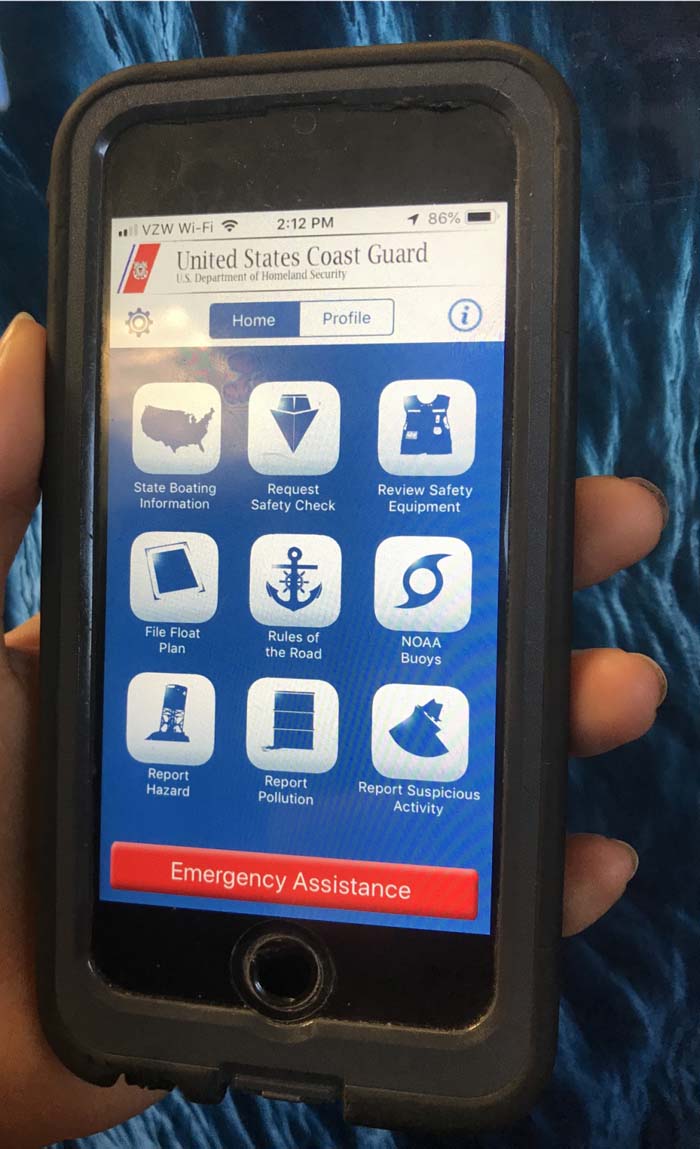 5. Cell phone: Not a primary, but a good back-up. While not reliable enough to be used on its own as an on-water communication device, it’s a good back-up in case your radio isn’t functional, you don’t have a radio, or you don’t know how to use one. The Coast Guard recommends mariners download the official Coast Guard Boating Safety App. One of the many features of the app allows mariners to place an emergency call to the U.S. Coast Guard or 911, and provides you with your current location to provide to emergency personnel over the phone.
5. Cell phone: Not a primary, but a good back-up. While not reliable enough to be used on its own as an on-water communication device, it’s a good back-up in case your radio isn’t functional, you don’t have a radio, or you don’t know how to use one. The Coast Guard recommends mariners download the official Coast Guard Boating Safety App. One of the many features of the app allows mariners to place an emergency call to the U.S. Coast Guard or 911, and provides you with your current location to provide to emergency personnel over the phone.
[information]
U.S. Coast Guard 5th District Mid-Atlantic
Contact: 5th District Public Affairs
Office: (757) 398-6272
After Hours: (757) 434-7712
[/information]


